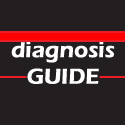By Gail Liberman
Sunday, May 15, 2005
My objective: Find the best deal on a high-deductible health insurance policy and pair it with the best deal on a Health Savings Account.
The Health Savings Account, available to just about anyone who isn't on Medicare, lets you cut your health insurance cost by choosing a high-deductible health plan. To qualify, your health plan deductible must be at least $1,000, $2,000 for family coverage.
With a high-deductible plan, you can make income tax-deductible contributions to a Health Savings Account — as much as $2,600 annually, $5,150 for families. Funds in that savings account grow tax-deferred. You can withdraw from that account income tax-free — provided that withdrawals strictly cover approved medical expenses. Persons over age 55 may contribute an extra $600 annually in 2005 to this Health Savings Account.
Of course, I love anything tax-deductible.
But finding the right combination of a savings/investment account and a high-deductible health insurance plan is tough.
Unfortunately, my own health insurance plan — a $1,000-deductible preferred provider organization (PPO), with cheap $20 co-pays for visits to my primary care physician — is ineligible. So are most health maintenance organizations (HMOs). Reason: Co-pays before you reach your deductible often disqualify a plan under federal regulations.
Even if I were to switch health plans, I never heard of the bank offering the Health Savings Account to which my insurer referred me.
"There are very few banks in Florida that do that at the moment," explains Bob Nay, director of product development for Blue Cross-Blue Shield of Florida. "So we've gone to Internet banks." Nay assures me that his company expects to ally with a large brand-name bank next year. In the meantime, he says, here's the scoop.
Search for health plan first
Even if your insurer says it doesn't have a Health Savings Account-compatible insurance plan, don't give up. You can set this arrangement up on your own with any high-deductible health insurance plan you choose. The catch: It must comply with the federal rules governing a qualifying high-deductible plan, outlined at www.treas.gov. Those rules primarily are:
• The insurance plan must have the minimum deductibles of $1,000 for individuals, $2,000 for families;
• The insurance plan must have annual out-of-pocket expenses that can't exceed $5,100 for individuals, $10,200 for family coverage.
• The deductible must apply to all medical expenses, including prescriptions. Prefer coverage or co-pays before you reach your deductible? Such coverage may only apply to "preventive" care, such as annual physicals, immunizations and pap smears.
Connect to plan to bank
Once you find your health plan, you can open a Health Savings Account, offered by any qualifying financial institution. The financial institution decides which of its investment or savings accounts to offer under the program.
Problem: Many well-known financial institutions initially are setting up Health Savings Accounts only through employers as employee benefits, notes Tom Hricik, national sales director for Mellon Bank, Pittsburgh. Expect more Health Savings Accounts for individuals to debut next year, he says.
Dan Perrin, president of the nonprofit HSA Coalition, Washington, D.C., estimates close to 100 financial institutions nationwide already offer a Health Savings Account. You may be able to find one and also obtain a list of compatible health insurance plans at his Web site, www.hsainsider.com.
HSA Bank, Sheboygan, Wisc., a division of Webster Financial, Waterbury, Conn., is believed to be the largest Health Savings Account provider. It has some 100,000 accounts, Perrin says.
He offers this advice if you're considering Health Savings Accounts:
• Only select a high-deductible Health Savings Account-eligible insurance plan if the premium is at least 35 percent lower than the insurer's low-deductible plan.
• Seek an insurance plan that provides for 100 percent coverage after the deductible in the first couple of years. This, Perrin says, gives you time to build up your health savings account balance to cover more expensive health care costs down the road.
Also:
• Check all fees and minimum thresholds to avoid them.
• If you're offered a Health Savings Account program through an employer, check for an added benefit. The plans may be set up like 401 (k) retirement plans — allowing employer contributions. Contributions may be deducted from your salary — before taxes
• HSA funds can be used to cover long-term care expenses and insurance, and to pay your health insurance if you're unemployed. They also may cover dental and vision care as well as over-the-counter drugs such as aspirin.
Pairing health savings account with insurance a challenge
Subscribe to:
Post Comments (Atom)
Search
Categories
- Assurance (2)
- Auto (16)
- Auto Insurance (9)
- Auto Insurance Companies (5)
- Auto Insurance Quotes (4)
- Automobile Insurance (2)
- bush (1)
- Business Insurance (2)
- Car Insurance Quotes (2)
- Cheap Auto Insurance (1)
- COBRA Insurance (1)
- cover (1)
- Flood Insurance (2)
- General Loan Information (1)
- george (1)
- george bush (1)
- Guides And Tips (18)
- Health Insurance (6)
- Health Insurance Quotes (1)
- Homeowner Insurance (1)
- insurance (15)
- Insurance Informations (1)
- insurance news (9)
- Insurance Provider (1)
- Insurance Rates (1)
- Insurance Tips (7)
- lemon law (3)
- life insurance (1)
- Life Insurance Quotes (1)
- Medical Insurance (2)
- money (1)
- Mortgage Insurance (1)
- online (1)
- Online Insurance (1)
- points (1)
- safety (2)
- Sedan (1)
- steps (1)
- Travel Insurance (2)
- Vehicle (2)
- vehicle cover (1)
- vehicle cover premiums (1)
- Whole Life Insurance (1)





0 comments:
Post a Comment